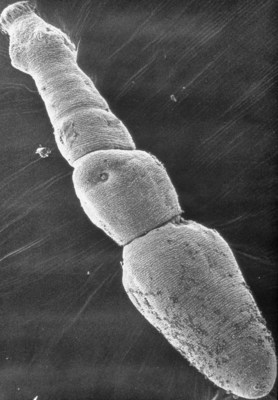Echinococcus multilocularis: An emerging threat
GUELPH, ON, April 3, 2018 /CNW/ - Echinococcus multilocularis, also known as the fox tapeworm, is a small tapeworm shed in the feces of wild canids like foxes and coyotes. Other common tapeworms shed segments that look similar to grains of rice or cucumber seeds that may be seen on your dog's fur. However, the fox tapeworm is very tiny and its segments are not likely to be seen. This makes it hard for pet owners to know if their dog has this worm.

Once thought not to be present in Canada, fox tapeworm has been reported in foxes and coyotes, as well as in dogs, in B.C., Alberta, Manitoba, Saskatchewan and Ontario. People and dogs can be infected when they consume a tapeworm egg from fox or coyote feces. While this is unlikely to happen intentionally, the tapeworms eggs can contaminate the ground, including garden vegetables and other vegetation. Dogs can get infected while sniffing the ground, playing with sticks or toys outdoors, or eating fox or coyote feces directly. People can get infected from contaminated fruits and vegetables that aren't washed or when eating without proper handwashing first. Once an egg is eaten by a dog or a person, the tapeworm can develop into a tumour type mass, usually affecting the liver. Treatment is very difficult so it is important that people are aware of the parasite and take precautions, like washing their hands as well as fruits and vegetables before eating. Dogs should be prevented from eating or rolling in fox or coyote feces.
Dogs also have an additional risk: they can become infected in the way as coyotes and foxes. If a dog eats an infected rodent, the dog can develop the adult tapeworm in their intestine. The dog will then pass eggs in its feces. The feces will then contaminate yards and parks with tapeworm eggs and create risk for the dog's family as well as other dogs and people that may be exposed. Talk to your veterinarian about the wildlife in your area, your dog's lifestyle and the most appropriate options for protecting your pet and your family.
SOURCE Canadian Animal Health Institute
News published on and distributed by:



